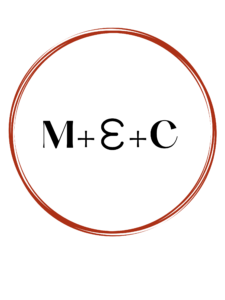mec_optim_archive_2020-01
ECON-GA 3503
‘math+econ+code’ part one: optimal transport and economic applications
NYU, Courant Institute (Warren Weaver Hall, 251 Mercer) Rm 101, January 20-24, 2020 (30 hours)
Instructor: A. Galichon (NYU Econ+Math). Email: alfred.galichon@nyu.edu. TA: James Nesbit (NYU Econ). Email: jmn425@nyu.edu.
Description
This intensive course, part of the ‘math+econ+code’ series, is focused on models of demand, matching models, and optimal transport methods, with various applications pertaining to labor markets, economics of marriage, industrial organization, matching platforms, networks, and international trade, from the crossed perspectives of theory, empirics and computation. It will introduce tools from economic theory, mathematics, econometrics and computing, on a needs basis, without any particular prerequisite other than the equivalent of a first year graduate sequence in econ or in applied math.
A particular emphasis will be given on HPC computation and parallel computing.
Because it aims at providing a bridge between theory and practice, the teaching format is somewhat unusual: each teaching “block” will be made of 50 minutes of theory followed by 1 hour of coding, based on an empirical application related to the theory just seen. Students are expected to write their own code, and we will ensure that it is operational at the end of each block. This course is therefore closer to cooking lessons than to traditional lectures.
The course is open to graduate students in the fields of economics and applied mathematics, but also in other quantitative disciplines. Students need to bring a laptop with them to the lectures. The knowledge of a particular programming language is not required; students are however expected to have some experience with programming. The language of the course will be Python.
The lecturer is Alfred Galichon (professor of economics and of mathematics at NYU). The TA is James Nesbit (graduate economics student at NYU). Pauline Corblet (graduate economics student at Sciences Po), Octavia Ghelfi and James Nesbit (graduate economics students at NYU) have helped prepare the course material. Support from NSF grant DMS-1716489 is acknowledged.
Suggested preparation readings (optional)
Alfred Galichon (2016). Optimal Transport Methods in Economics. Princeton University Press.
Course material
Available on github here.
Available on NYU’s HPC cluster here.
Course material from past editions available from this Github repository.
Practical information
• Schedule: Monday to Friday, 8:30am-12:30pm and 1:30pm-3:30pm. Location: NYU Courant Institute, Warren Weaver Hall, 251 Mercer St, Room 101.
• Credits: 2, assessed through a take-home exam or a short final paper, at the student’s option.
• A syllabus is available at http://alfredgalichon.com/mec_optim/.
• NYU Students need to register on Albert (code ECON-GA 3503). Students are advised to contact the instructor (alfred.galichon@nyu.edu) ahead of time.
Outline
• Monday: linear programming, dynamic programming, network flows
• Tuesday: optimal transport toolbox 1 (discrete, one-dimensional, semi-discrete cases)
• Wednesday: optimal transport toolbox 2 (continuous transport, convex analysis, entropic regularization)
• Thursday: static and dynamic multinomial choice
• Friday: statistical estimation of models of matching with transfers
Synopsis
SYNOPSIS
Part I: Tools
Day 1: linear programming (Monday)
Block 1. Basics of linear programming (morning 1st half)
• Theory: linear programming duality; complementary slackness; minimax formulation
• Coding: How to eat optimally? Dataset: Stigler’s original diet data (1945).
Block 2. Network flow problems (morning 2nd half)
• Theory: directed graphs and min-cost flow problem
• Coding: How to find the shortest path through a network? Dataset: Paris subway; New York City street network.
Block 3. Dynamic programming as linear programming (afternoon)
• Theory: Bellman’s equation; interpretation of duality; forward induction, backward induction
• Coding: When to repair mechanical engines? Dataset: Rust’s bus maintenance data (1994).
Day 2: optimal transport I (Tuesday)
Block 4. Discrete matching (morning 1st half)
• Theory: Shapley-Shubik duality; stability; decentralized equilibrium
• Coding: How to solve it? Dataset from Dupuy and Galichon (JPE 2014).
Block 5. Positive assortative matching (morning 2nd half)
• Theory: Becker’s model; compensating differentials; comonotonicity
• Coding: What is a CEO worth? Dataset: Gabaix-Landier’s (QJE 2008) CEO pay data.
Block 6. Hotelling’s characteristics model (afternoon)
• Theory: power diagrams, Aurenhammer’s method
• Coding: How to infer the unobservable quality of a car model? Dataset: Feenstra-Levinsohn (Restud 1994) car data.
Day 3: optimal transport II (Wednesday)
Block 7. Continuous multivariate matching (morning 1st half)
• Theory: Knott-Smith criterion; Brenier’s map; McCann’s theorem
• Applications: exercises.
Block 8. A short tutorial on convex analysis (morning 2nd half)
• Theory: convex duality; Fenchel’s inequality; subdifferentials and their inverses
• Application: exercises.
Block 9. Regularized optimal transport (afternoon)
• Theory: optimal transport with entropic regularization, and with other regularizations.
• Coding: coordinate descent and the IPFP algorithm.
Part II. Models
Day 4: models of static and dynamic multinomial choice (Thursday)
Block 10. Basics of static discrete choice (morning 1st half)
• Theory: Dary-Zachary-Williams theorem, generalized entropy of choice, the inversion theorem
• Coding: How to solve it? simulation methods; AR, SARS, and GHK. Dataset: Greene and Hensher (1997) data on choice of travel mode.
Block 11. Demand models, old and new (morning 2nd half)
• Theory: the GEV model; the random coefficient logit model and the pure characteristics models
• Coding: How to estimate demand for automobiles? Dataset: BLP.
Block 12. Dynamic discrete choice methods (afternoon)
• Theory: Rust’s model; estimation; normalization issues
• Coding: maintenance choice.
Day 5: empirical matching models, the quasilinear case (Friday)
Block 13. Separable models of matching (morning 1st half)
• Theory: matching with unobservable heterogeneity
• Coding: Did Roe vs. Wade decrease the value of marriage? Dataset: Choo and Siow (JPE 2006).
Block 14. The gravity equation (morning 2nd half)
• Theory: optimal transport and the gravity equation; generalized linear models and pseudo-Poisson maximum likelihood estimation
• Coding: How to forecast international trade flows? estimating the gravity equation based on WTO international trade data.
Block 15. High-dimensional matching models (afternoon)
• Theory: estimation of rank-constrained models
• Application: Does physical appearance have a price? matching on socioeconomic and anthropomorphic characteristics. Dataset: Chiappori, Oreffice and Quintana-Domeque’s (JPE 2012).

